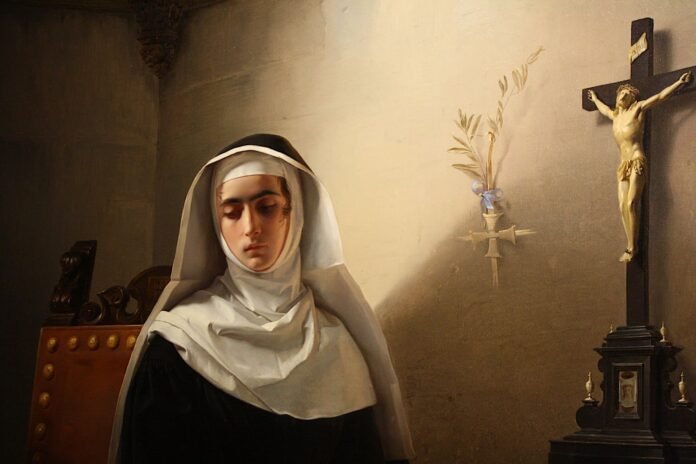Last Updated on December 5, 2025 by Nadeem Ahmed
The journey of women’s clergy attire reflects centuries of social, theological, and cultural change. These garments, from ancient head coverings to innovative new robes, are not mere fabrics—they are visual summaries of women’s presence and leadership in spiritual spaces. As female clergy have stepped into roles of greater visibility, their attire has adapted, growing more diverse and meaningful. Today, choices in female clergy attire echo centuries-old customs and urgent contemporary values, connecting tradition to modernity profoundly. Women leaders in the church, temple, or synagogue have long navigated the complex intersection of faith, gender norms, and personal expression. The transformation of their garments reveals much about the shifting boundaries of religious tradition and female empowerment, opening new chapters in the ongoing story of equal spiritual leadership.
Table of Contents
Historical Foundations of Women’s Clergy Attire
Head coverings were central to women’s clergy attire for much of Christian history. Early church regulations—including teachings in the Didascalia Apostolorum—urged women to cover their hair during prayer. This guiding principle of modesty and reverence shaped the look of the earliest Christian and Jewish female leaders and influenced how entire communities understood gendered roles in worship. Textiles, colors, and covering styles varied regionally, but the symbolism of humility and setting women visually apart remained constant for centuries. Such traditions weren’t isolated to Christianity. In Judaism and Islam, head coverings sustained their symbolic roles, shaping lay and clergy appearance through emphasizing piety, humility, and group identity. These historical rooms maintained continuity and served as a means of social cohesion and spiritual regulation.
Medieval and Renaissance Influences
In medieval Europe, rules regarding women’s head coverings extended beyond sacred settings into everyday life. Sumptuary laws regulated the fineness of a woman’s veil, asserting both economic and moral order through what clergy and laywomen wore. Often deemed immodest or even rebellious, uncovered hair was discouraged for public appearance, contributing to a thriving culture of veils, wimples, hoods, and caps. These garments were deeply woven into both clergy attire and broader gender expectations. Paintings, manuscripts, and legal documents of the Renaissance period offer a compelling visual record of veiled female clergy and laywomen alike. Against the dramatic backdrop of social and religious transformation, their attire signified their devotion and, increasingly, their educative and pastoral leadership roles within their communities. For a deeper perspective, Smithsonian Magazine explores the evolution of women’s roles in religion, further contextualizing attire rules within broader societal shifts.
Modern Shifts and the Rise of Female Clergy
The 20th and 21st centuries ushered in unprecedented change. As mainline Protestant and some Catholic denominations began ordaining women, clergy attire underwent a vital transformation. The shift responded directly to a growing demand for garments designed for the female form rather than adapted from male patterns. Robes, stoles, and clerical shirts tailored for women replaced the one-size-fits-all garments of prior generations. Contemporary symbols, such as the color purple denoting ordination, began to reflect women’s spiritual authority through tradition and intentional design and fit.
The creation and adoption of modern vestments allowed women to feel more comfortable and signaled a new visual language for spiritual equality. Past barriers and stereotypes gradually gave way to a sense of belonging, with many denominations welcoming not only women priests or pastors but also the distinct attire expressing their role.
Denominational Variations in Women’s Clergy Attire
Despite this progress, attire traditions remain highly varied. Catholic and Anglican clergy often wear cassocks and an alb, emphasizing continuity and symbolism. Within these traditions, newly tailored vestments meet both canonical guidelines and contemporary needs. In contrast, many Protestant branches—such as Lutheran, Methodist, and Baptist communities—have embraced more practical adaptations, including suits, clergy shirts, and sometimes even clerical dresses tailored for women. Denominational guidelines, regional culture, and local parish preferences all influence which garments are adopted and how traditions are honored.
Contemporary Trends: Inclusivity and Sustainability
With societal priorities shifting toward inclusivity, diversity, and environmental stewardship, today’s women’s clergy attire is both practical and progressive. Designers use natural fibers, organic cotton, and recycled textiles while creating adjustable, gender-neutral, and body-inclusive silhouettes. These approaches support a more welcoming house of worship—one where clergy serve and feel authentically represented in their professional garments. Furthermore, collaborations between female clergy and designers have led to custom collections that celebrate individuality and community values, inspiring the next generation of church leaders to honor their callings—without sacrificing comfort or conscience.
The Future of Women’s Clergy Attire
Looking ahead, the dialogue between tradition and modernity is certain to continue reflecting the growth of women’s leadership in faith settings. Subsequent innovations will likely be characterized by customized robes, multi-purpose garments, symbolic colors, and ethical fabrics. These changes will not only mirror theological and social progress but also broaden the meaning of service, leadership, and sacred identity for female clergy everywhere.
Conclusion
The garments worn by women clergy are far more than clothing items—they’re expressions of spiritual identity, historical dialogue, and collective progress. By recognizing the layered history and rapidly innovating present of women’s clergy attire, faith communities can better honor the invaluable contributions of their leaders and champion a more inclusive future.
Apart from that if you want to know about From Retro to Ridiculous: The Bootleg T-Shirt Boom at GiftsHandMadeUK then please visit our Fashion Category.
















